Friday, 17th May 2024
Global Trade Update: UNCTAD
In News: The Global Trade Update 2024, released by the United Nations Conference on Trade and Development (UNCTAD), indicates that international trade, following declines over multiple quarters, is set to rebound in 2024.
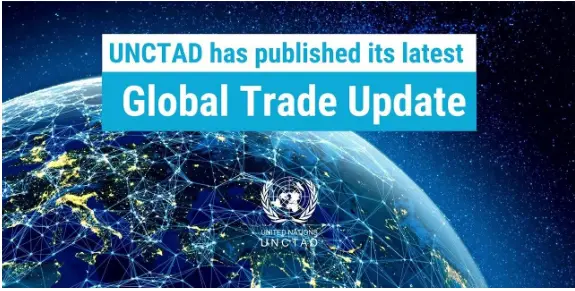
Key Highlights of the Global Trade Update
- Challenging Year for Trade in 2023
- Global trade experienced a 3% decline to USD 31 trillion in 2023 after reaching a peak in 2022, driven by reduced demand in developed economies and weaker trade in East Asia and Latin America.
- Trade in goods fell by 5%, while trade in services grew by 8%, primarily fuelled by a nearly 40% surge in tourism and travel-related services.
- Issues Faced by Developing Countries
- Developing countries witnessed a sharper decline in trade, with imports and exports falling by 5% and 7%, respectively, compared to a 4% drop in imports and 3% in exports for developed nations.
- Most regions experienced negative trade growth in 2023, except for a significant increase in intra-regional trade in Africa.
- Trade in Environmental Goods
- Despite the overall decline, trade in environmental products rose by 2% in 2023, driven primarily by soaring sales of electric cars, with trade in electric vehicles growing by 60%.
- Signs of Stabilization by End of 2023
- The final quarter of 2023 showed signs of stabilization, particularly in developing regions, with most sectors witnessing a rebound, although trade in apparel continued to contract, falling by 13%.
- Outlook for 2024
- The forecast for 2024 is generally positive, with GDP growth expected to continue at around 3%.
- However, logistical challenges and geopolitical tensions pose risks to the optimistic outlook, potentially disrupting supply chains and increasing costs.
- Political Proximity of Trade
- Over the last two years, there has been a noticeable rise in the political proximity of trade, indicating a preference for bilateral trade between countries with similar geopolitical stances.
- This trend has led to a concentration of global trade to favor major trade relationships.
Key Highlights Related to India
- Observations on Trade Dependency
- Despite efforts to reduce dependency on China through initiatives like the PLI scheme and QCOs, India saw an increase in imports from China.
- The Russia-Ukraine conflict caused significant trade reorientation, with Russia's trade dependency on China increasing and decreasing with the EU.
- Government's Response
- The Ministry of Commerce and Industry stated that detailed analysis revealed favorable trade dynamics, with India's imports from the EU rising by 9.7% in 2023.
- India's exports of smartphones surged by 98.42% in 2023, indicating significant improvement in trade performance with the EU and China.
|
UPSC Previous Year Questions Prelims (2023) Q. Consider the following statements: Statement-I: In the post-pandemic recent past, many Central Banks worldwide had carried out interest rate hikes. Statement-II: Central Banks generally assume that they have the ability to counteract the rising consumer prices via monetary policy means. Which one of the following is correct in respect of the above statements? (a) Both Statement-I and Statement-II are correct and Statement-II is the correct explanation for Statement-1 Ans: A |
Source: IE
Trends in Employment Growth
In News: In recent years, India has experienced a remarkable surge in employment, witnessing the creation of over 80 million additional jobs from 2017-18 to 2022-23.
Key Trends in Employment Growth
- Historical Growth
- Analysis of NSSO data from 1983 to 2023 indicates consistent growth in principal employment throughout various sub-periods.
- Consistent Growth
- Principal employment, indicating those engaged in the main job for the majority of the year, has consistently increased since 1983, with no instances of jobless growth observed.
- Significant Increase (2017-2023)
- The period from 2017-18 to 2022-23 witnessed the fastest increase in employment, with approximately 80 million additional jobs created, equating to an annual growth rate of 3.3%.
- Labour Market Indicators
- Recent years have seen improvements in key labour market indicators such as labour force participation rate, workforce participation rate, and unemployment rate, despite long-term deterioration since 2000.
- Broad-Based Growth
- Employment growth has been distributed across rural and urban sectors, as well as various industries like manufacturing, agriculture, construction, and services.
- Women and Older People
- The highest employment growth rates have been recorded among women, surpassing 8% annually, while employment among individuals aged 60 and above has grown at approximately 4.5% annually.
- Employment Condition Index
- The "employment condition index" has shown improvement between 2004-05 and 2021-22, although some states consistently lag behind while others excel in employment conditions.
Evolution of Employment Quality
- Rise in Informal Employment
- Approximately 50% of jobs in the formal sector are informal, with around 82% of the workforce engaged in the informal sector and nearly 90% informally employed.
- Dominance of Self-Employment
- A significant portion of employment growth is in the form of own-account workers and unpaid family workers, possibly influenced by government schemes like Pradhan Mantri MUDRA Yojana (PMMY).
- Trends in Wages and Salaries
- Aggregate wages and salaries have experienced relative stagnation in recent years, with nominal growth higher than real growth after accounting for inflation.
Trends in Youth Employment
- Youth Employment and Underemployment
- Youth employment and underemployment increased between 2000 and 2019 but declined during the pandemic years, with a notable rise in unemployment among educated youths.
Concerns Regarding Employment in India
- Growth of Informal Sector
- While the economy grows, many new jobs are informal, lacking security, benefits, or minimum wage standards.
- Quality of Jobs for Youth
- Youth employment often lacks quality, with individuals over-educated for available jobs or stuck in precarious situations like the gig economy.
- Gender Gap
- Women's participation in the workforce hasn't grown as anticipated, with many engaged in unpaid family work or low-paying self-employment instead of formal employment.
- Skill Mismatch
- The education system may not align with current job market needs, leading to a skill mismatch.
- Formalisation Challenges
- A significant portion of the workforce remains in the informal sector, posing challenges for tax revenue and social security benefits.
- Job Automation
- Automation poses a threat to certain sectors, potentially leading to job displacement.
- Vulnerability to Economic Shocks
- Many workers in informal or casual employment are highly vulnerable to economic downturns or external shocks.
- High Demand for Government Jobs
- There is significant demand for government jobs due to limited job creation in the private sector.
Way Forward
- Promote Formalisation
- Implement strategies to incentivise informal workers to transition to the formal sector, streamlining registration processes for small businesses.
- Targeted Programs for Marginalised Groups
- Implement targeted skill development programs for individuals from marginalised communities.
- AI and Automation Reskilling
- Prepare the workforce for automation by providing training programs in emerging technologies.
- Social Security Portability
- Design a portable social security system for gig workers and those transitioning between formal and informal sectors.
- Entrepreneurship and Innovation
- Establish industry-specific startup incubators and encourage angel investor networks.
- Remote Work Opportunities
- Encourage companies to offer remote work arrangements to expand job opportunities and promote work-life balance.
|
UPSC Previous Year Questions Prelims (2016) Q. Pradhan Mantri MUDRA Yojana is aimed at (a) bringing the small entrepreneurs into formal financial system Ans: (a) Prelims (2013) Q. Disguised unemployment generally means (a) large number of people remain unemployed Ans: (c) Mains (2023) Q. Most of the unemployment in India is structural in nature. Examine the methodology adopted to compute unemployment in the country and suggest improvements. |
Source: IE
India’s E-commerce Market
In News: According to a recent report by Invest India, an Investment Promotion and Facilitation Agency, India's E-Commerce Sector is forecasted to achieve a value of USD 325 billion by the year 2030.
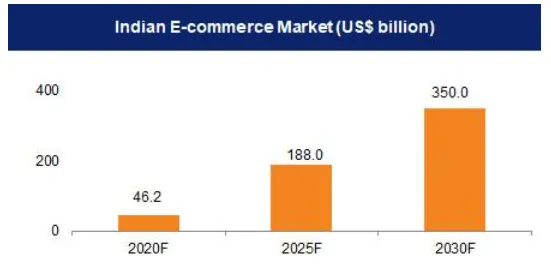
Status of the E-Commerce Sector in India
- Overview
- E-commerce, or Electronic Commerce, facilitates buying and selling of goods and services over the internet, transcending geographical barriers.
- Key Statistics
- Between 2019 and 2026, the number of online shoppers in India is projected to reach 88 million in Rural India and 263 million in Urban India.
- In the fiscal year 2022-23, Government e-marketplace (GeM) achieved its highest-ever Gross Merchandise Value of USD 2011 billion.
- As of 2023, the e-commerce sector in India is valued at USD 70 billion, constituting approximately 7% of the country’s total retail market.
- India ranked 7th in the global e-commerce market as of 2022.
- Driving Factors
- Smartphone and Digital Penetration: The rise in smartphone usage, coupled with digital payment systems like the Unified Payments Interface (UPI), has fueled e-commerce growth.
- Affordability of Cheap Internet: Affordable internet prices and increasing internet penetration, expected to reach 87% by 2025, contribute to the expansion of e-commerce.
- Improved Logistics and Supply Chain: Efficient logistics and supply chain networks, supported by government initiatives like the National Logistics Policy, aid in e-commerce expansion.
- Rising Middle-Class Population and Disposable Incomes: Growing middle-class population and disposable incomes drive demand for e-commerce.
- Convenience and Time-Saving: E-commerce offers convenience and time-saving benefits to consumers, boosting its popularity.
- Wider Product Assortment and Competitive Pricing: E-commerce platforms provide vast product choices and competitive pricing, attracting consumers.
- Rising Focus on Rural E-Commerce: Rural-centric e-commerce is gaining prominence, driven by government initiatives and the emergence of quick commerce.
- Challenges
- Counterfeit and Intellectual Property Infringement: Instances of counterfeit goods and intellectual property infringement pose challenges to consumer trust and regulatory compliance.
- Infrastructural Challenges: Issues such as low internet penetration and lack of standardized postal addresses affect logistics.
- Lack of Clear Regulatory Framework: Clear legislation is required to regulate e-commerce practices and address emerging trends like social commerce.
- Technological Disruptions and Cybersecurity Threats: Technological disruptions and cybersecurity threats, including data breaches, impact consumer trust and payment security.
Measures to Boost the E-Commerce Sector
- Robust Infrastructure Development
- Investing in improving logistical infrastructure, including transportation networks and warehousing facilities, is crucial for enhancing last-mile delivery and reducing fulfilment costs.
- Utilizing AI technology, data analytics, and automation can optimize logistics and supply chain management.
- Strong Payment System
- Building a secure payment system compliant with PCI DSS standards is essential to foster trust and facilitate secure transactions.
- Regulatory Framework for E-commerce
- Establishing a clear regulatory framework to safeguard consumer rights, ensure transparent pricing, and provide effective grievance redressal mechanisms is necessary.
- Creating Awareness
- Promoting awareness through education, training, networking events, and marketing campaigns can enhance understanding and participation in e-commerce.
Source: BS
Ligdus Garvale
In News: A recent discovery by a team of naturalists unveiled a new spider species named 'Ligdus Garvale' in Garvale village, situated within the Somwarpet taluk of Karnataka's Kodagu district.
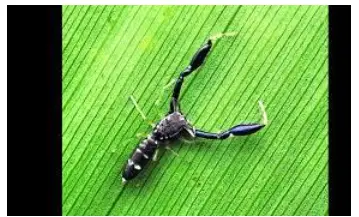
Ligdus Garvale: A New Species of Jumping Spider
Discovery and Habitat
- Ligdus Garvale is a newly discovered species of jumping spider.
- It was found in Garvale village of the Kodagu district, Karnataka, surrounded by agroforestry, including coffee, pepper, and paddy fields.
- This species marks only the second recorded instance of the Ligdus genus in 129 years, the first being Ligdus Chelifer reported from Myanmar in 1895.
- Ligdus Garvale was discovered under the leaf of a torch ginger plant and bears a resemblance to Pseudoscorpions.
- Due to its nature as a high canopy jumper, it often goes unnoticed and constructs a double-layered web for retreat.
What are Jumping Spiders?
- Jumping spiders belong to the largest family of spiders, known as Salticidae, comprising more than 6,380 species.
- They are characterized by their ability to jump and pounce upon their prey.
- These spiders are prevalent in tropical regions, but some also inhabit northern and even Arctic areas.
Features
- Jumping spiders range in size from 2 to 22 mm, with most being small to medium-sized.
- The largest species, such as Hyllus giganteus, can reach up to 0.98 inches (2.5 centimeters) in length.
- While some species have hairy bodies, most have few hairs (setae).
- They often exhibit bright colors or striking patterns on their bodies.
- Jumping spiders possess impressive eyesight, with four pairs of eyes, including a large, forward-facing principal pair.
- They are diurnal creatures, and most species are solitary in nature.
Source: TOI
The Kadars
In News: The indigenous community and conservationists were shocked by the recent passing of a Kadar tribesman in Tamil Nadu's Anamalai Tiger Reserve, following an elephant attack. This event is unexpected, given the Kadars' historical reputation for peacefully cohabiting with wild elephants over many years.
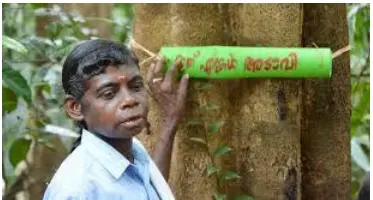
The Kadars: A South Indian Indigenous Tribal Community
- Background
- The Kadars are a small indigenous tribal community located in South India.
- They inhabit the hilly border area between Cochin in Kerala and Coimbatore in Tamil Nadu.
- Traditionally, they are forest dwellers who rely on forest resources for their livelihood.
- Lifestyle and Practices
- The Kadars do not engage in agriculture, instead building shelters thatched with leaves and relocating as their employment demands.
- They prefer rice obtained through trade or as wages rather than relying solely on food gathered from their surroundings.
- Historically, they have specialized in collecting honey, wax, sago, cardamom, ginger, and umbrella sticks for trade with merchants from the plains.
- They maintain a symbiotic relationship with nature, believing in the coexistence of Kadar and Kaadu (forest).
- The Kadars follow traditional protocols to ensure the sustainable use of forest resources, allowing for regeneration with every resource collection practice.
- Population and Language
- The estimated population of the Kadars was around 2,000 individuals in the early 21st century.
- They speak Dravidian languages, primarily Tamil and Kannaḍa.
- Beliefs and Customs
- The Kadars worship jungle spirits, a kindly creator couple, and local forms of Hindu deities.
- They uphold traditional customs and rituals as part of their cultural practices.
- Vulnerable Status
- In Kerala, the Kadars are recognized as a Particularly Vulnerable Tribal Group (PVTG), but this status is not acknowledged in Tamil Nadu.
Source: TH
Igla-S Man-Portable Air Defence System
In News: The Army is poised to commence the reception of additional Russian Igla-S very short-range air defence systems (VSHORAD) by the end of May or in early June.
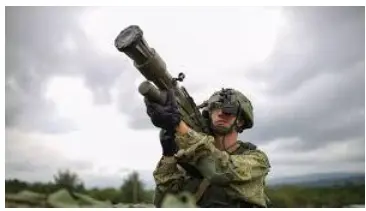
Overview of Igla-S Man-Portable Air Defence System
- About Igla-S:
- The Igla-S is a man-portable air defence system (MANPADS) developed by Russia.
- Capabilities:
- It serves as a hand-held defence system that can be operated by an individual or crew.
- Designed to intercept low-flying aircraft, it can also identify and neutralise air targets like cruise missiles and drones.
- Components include the 9M342 missile, 9P522 launching mechanism, 9V866-2 mobile test station, and 9F719-2 test set, providing a comprehensive air defence solution.
- As a VSHORAD (Very Short Range Air Defence) system, it serves as a final line of defence against enemy combat aircraft, helicopters, and UAVs within a multilayered air defence network.
- Range and Speed:
- The Igla-S has a range spanning from 500 metres to 6 kilometres.
- It can engage targets up to an altitude of 3.5 kilometres.
- Missile speed reaches 400 metres per second, with deployment taking 13 seconds.
- Significance:
- The acquisition of the Igla-S MANPADS represents a significant advancement in India's air defence capabilities, particularly in mountainous terrains.
Source: TH
Bulava Missile
In News: The Russian President has enhanced the country's military strength by instructing the incorporation of a new nuclear-capable missile, named the Bulava, into the Russian military arsenal.
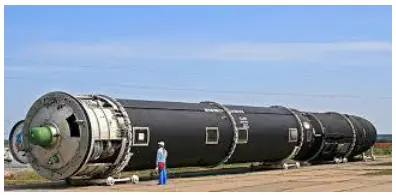
Overview of the Bulava Missile
- About Bulava Missile:
- The RSM-56 Bulava, also known by its NATO reporting name SS-N-32, is a submarine-launched intercontinental ballistic missile (ICBM) developed by Russia.
- Development and Deployment:
- Designed by the Moscow Institute of Thermal Technology, development of the missile began in the late 1990s.
- It is intended to be deployed on Russia’s Borei-class submarines.
- Bulava is a crucial component of Russia’s future strategic nuclear force.
- Key Features:
- It operates as a three-stage solid-propellant missile.
- With a launch mass of approximately 36.8 tonnes, it has a throw weight of 1,150 kg.
- The missile measures 12.1 meters in length within a launch container and has a diameter of 2 meters.
- Capabilities:
- Bulava boasts a maximum range of 8,300 km (5,160 miles).
- It can carry up to 10 multiple independently targetable re-entry vehicles (MIRVs) capable of delivering nuclear warheads to various targets.
- The missile’s re-entry vehicles (RVs) possess in-flight maneuverability and re-targeting capabilities to evade enemy defenses.
- Expected accuracy of the RVs is around 250 to 300 meters.
Source: HT
Kanwar Lake
In News: Kanwar Lake, formerly a haven for migratory birds, is now facing a battle for survival.
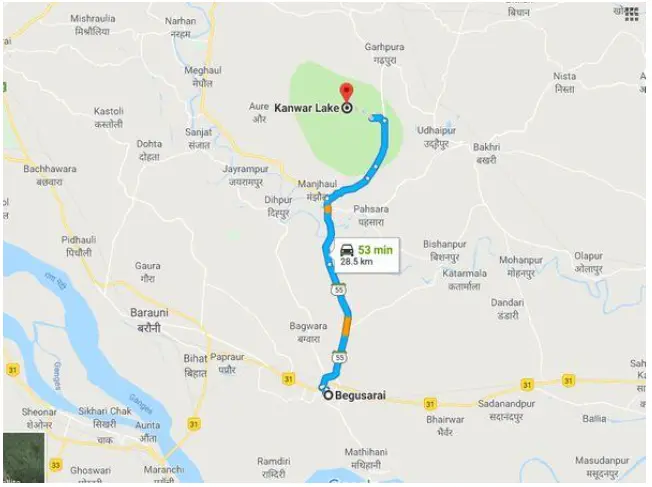
Overview of Kanwar Lake and Oxbow Lakes
- About Kanwar Lake:
- Location: Kanwar Lake, also known as Kabartal jheel, is Asia’s largest freshwater oxbow lake situated in Bihar.
- Formation: It is a rainfed lake formed as a residual oxbow lake due to the meandering of the Gandak river, a tributary of the Ganga.
- Geographic Coverage: Kanwar Lake covers a significant portion of the Indo-Gangetic plains in northern Bihar.
- Ecological Importance:
- Migratory Stopover: It serves as a crucial stopover along the Central Asian Flyway, hosting 58 migratory waterbirds for resting and refueling.
- Biodiversity: The lake supports a diverse fish biodiversity, documented to have over 50 species.
- Endangered Species: Five critically endangered species, including three vulture species and two waterbirds, inhabit the site.
- Threats: Major threats to Kanwar Lake include water management activities such as drainage, water abstraction, damming, and canalization.
What is an Oxbow Lake?
- Definition: An oxbow lake is a curved lake formed alongside a winding river as a result of erosion and sediment deposition over time.
- Characteristics: These lakes typically have a crescent shape and are commonly found in floodplains and low-lying areas near rivers.
Source: TH
Share the article
Edukemy’s Current Affairs Quiz is published with multiple choice questions for UPSC exams
MCQ
Get Latest Updates on Offers, Event dates, and free Mentorship sessions.

Get in touch with our Expert Academic Counsellors 👋
FAQs
UPSC Daily Current Affairs focuses on learning current events on a daily basis. An aspirant needs to study regular and updated information about current events, news, and relevant topics that are important for UPSC aspirants. It covers national and international affairs, government policies, socio-economic issues, science and technology advancements, and more.
UPSC Daily Current Affairs provides aspirants with a concise and comprehensive overview of the latest happenings and developments across various fields. It helps aspirants stay updated with current affairs and provides them with valuable insights and analysis, which are essential for answering questions in the UPSC examinations. It enhances their knowledge, analytical skills, and ability to connect current affairs with the UPSC syllabus.
UPSC Daily Current Affairs covers a wide range of topics, including politics, economics, science and technology, environment, social issues, governance, international relations, and more. It offers news summaries, in-depth analyses, editorials, opinion pieces, and relevant study materials. It also provides practice questions and quizzes to help aspirants test their understanding of current affairs.
Edukemy's UPSC Daily Current Affairs can be accessed through:
- UPSC Daily Current Affairs can be accessed through Current Affairs tab at the top of the Main Page of Edukemy.
- Edukemy Mobile app: The Daily Current Affairs can also be access through Edukemy Mobile App.
- Social media: Follow Edukemy’s official social media accounts or pages that provide UPSC Daily Current Affairs updates, including Facebook, Twitter, or Telegram channels.



